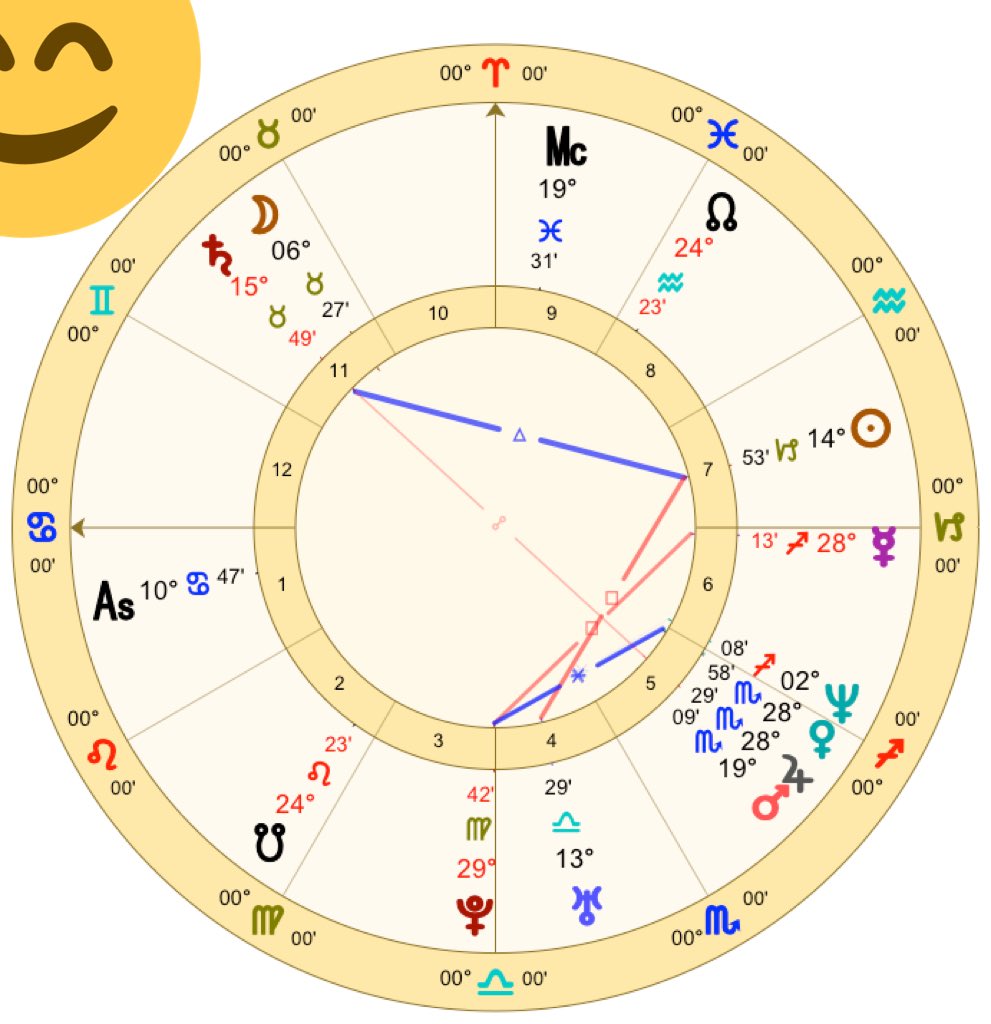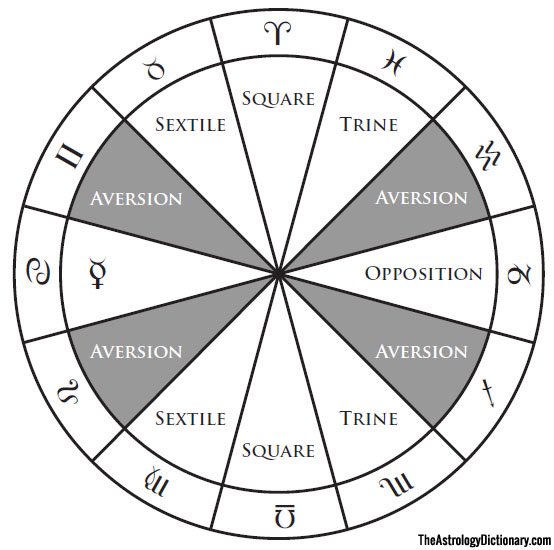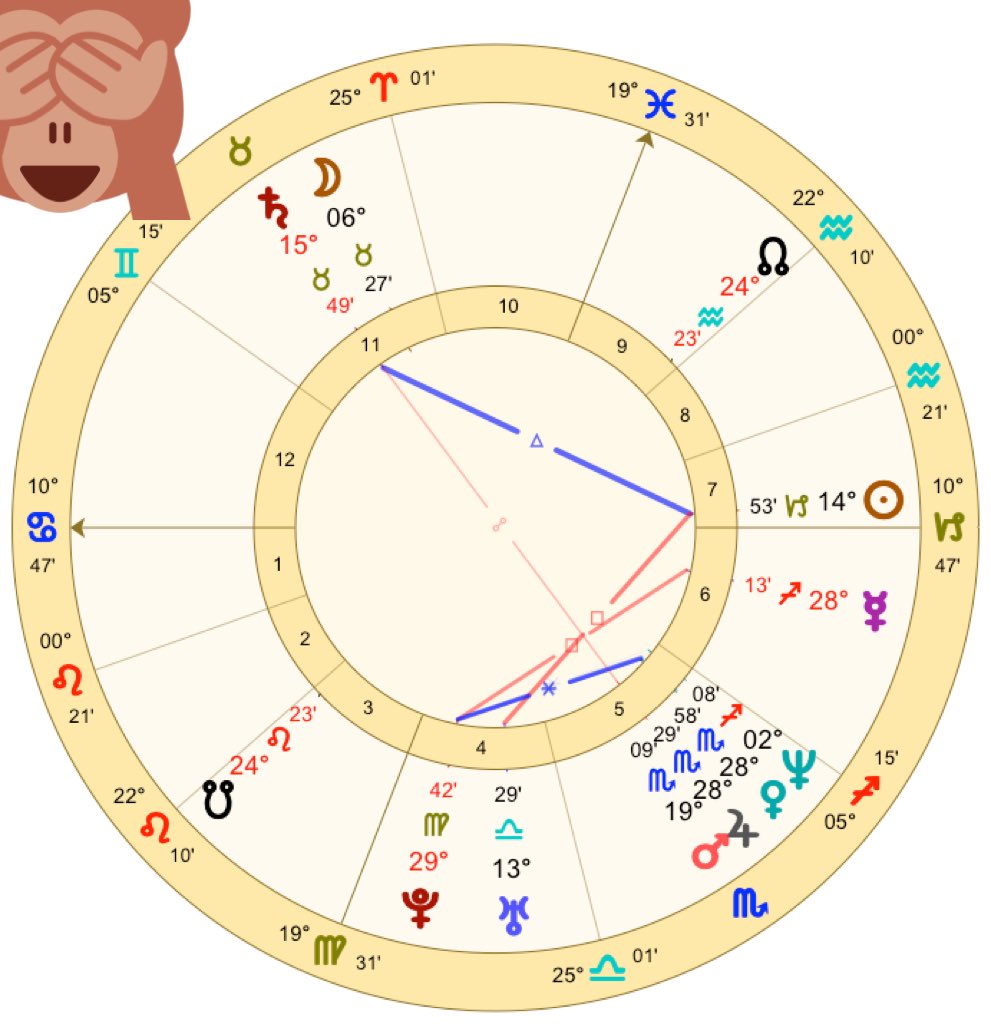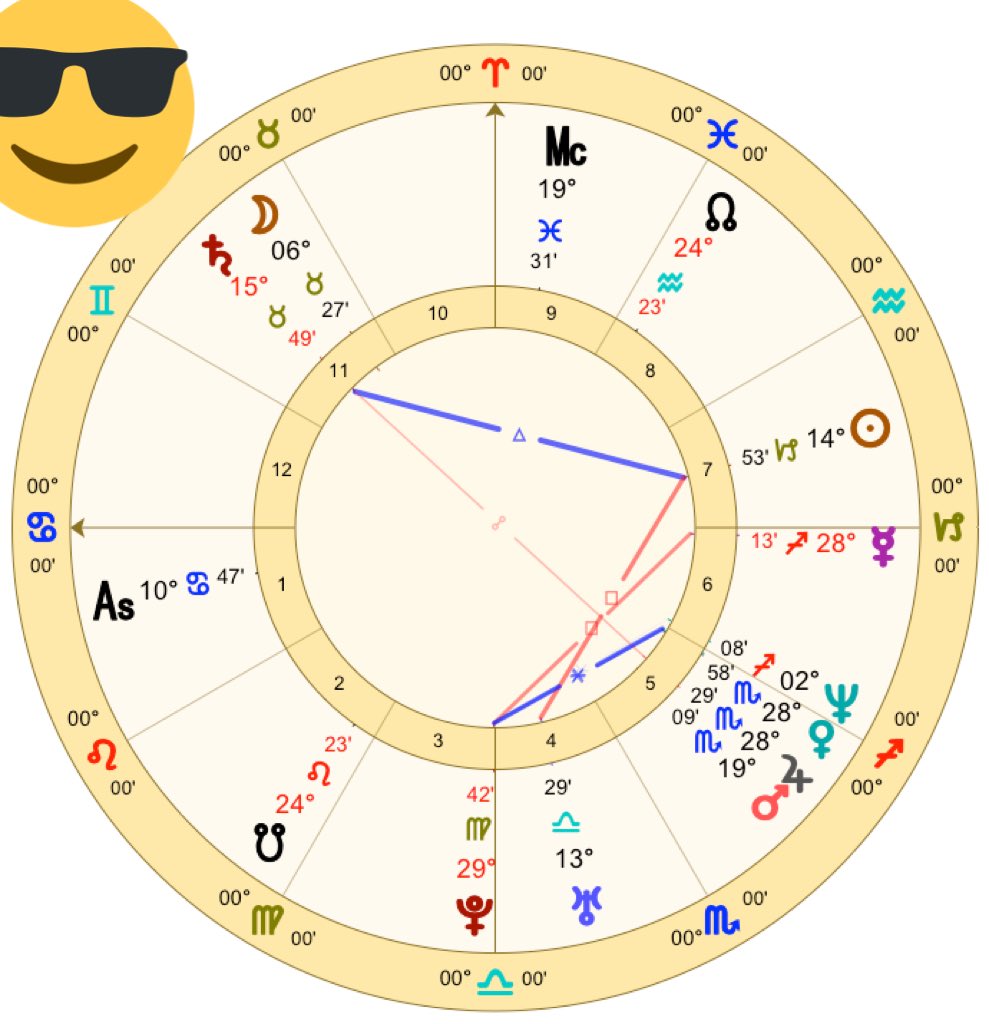Why I switched from Placidus to Whole Sign Houses, and why I think you can benefit from it too. [ THREAD ]
Theres always the question a beginner Astrologer ask and its: “What House System should I use”. The default house system that most Astrology softwares use are Placidus, which is a solid house system (this thread isn’t COMPLETE slander against Placidus…) but I’ve found that…
… there is another house system that provides a greater level of clarity and understanding of the Birth chart— and every chart: Whole Sign Houses. In order to compare and contrast the differences in these house systems, let me briefly explain how Placidus works.
Placidus is a quadrant based house system, which means that the chart is divided into quarters by the MC/IC axis and the ASC/DSC axis, and the other 8 houses will fall somewhere in their respective quadrants, depending on the mathematical formula for calculating houses.
In short, the Ascendant/Descendant is where the first/7th house starts and the Midheaven/Immum Coeli is where the 10th/4th house starts. This is a key feature of any quadrant based house system (Placidus). However there are a few things that can happen in Placidus.
At northern latitudes, some houses can be very large, covering at least 3 whole signs in a single house and other houses will be very small, having 3 houses in a single sign.
Heres an example of a chart of a child born in Sweden with a Placidus chart.
Heres an example of a chart of a child born in Sweden with a Placidus chart.
In this chart we can see that the native has Taurus rising and their 2nd and 3rd house fall in Gemini, while her 3rd and 4th house fall in Cancer. This is an example of duplicated houses. This also means that a sign is intercepted. In this case…
… the 60º arc of Virgo and Libra are encapsulated in the 6th house, while Pisces and Aries are encapsulated inside the 12th house. Another less drastic example is a chart of someone born in New York City, we see that Scorpio/Taurus is intercepted in the 5th and 11th house.
I will get back to both of these chart examples in a second, but lets take a look at what Whole Sign Houses are.
The name is kind of self explanatory: each house is a whole sign. For those who may be unaware, each of the 12 signs consist of a 30º portion of the ecliptic
The name is kind of self explanatory: each house is a whole sign. For those who may be unaware, each of the 12 signs consist of a 30º portion of the ecliptic
(the Ecliptic is the apparent path of the sun from Earth), and if we multiply 30x12: we get 360º— a circle. If each house in WSH (whole sign houses) is 30º, it covers the whole sign, and this means no signs are intercepted, or duplicated in houses.
In Whole sign, each house receives equal representation. In contrast to the Placidus system, where the signs ruling houses varies. Take a look at the previous charts, in whole sign.
Because this isn’t a quadrant based system, you’ll notice that the midheaven (MC) floats around in the 9th house instead of the 10th. This is common, and sometimes the midheaven can be in houses 11, 12 , or 8!
In chart interpretation, most of the work is done by looking at the rulers of houses, not necessarily a planet in a house alone. A planet in a house alone really means nothing.
Planets ruling houses is the most important aspect of chart delineation, because then we have a significator for that area of life. Not every area of life is going to act on its own though, since the 7 traditional planets rule 12 signs. 10 signs are divided amongst 5 planets…
and the sun and the moon are allocated to Leo and Cancer. The fact that every sign and planet has representation in Whole Sign is where Placidus falls short in terms of chart delineation.
Because of intercepted signs and duplicated signs, some planets won’t have representation in a chart, and because looking at the rulers of houses is so important: it suggest that this sign/planet has no relevance in the chart.
Not only does it suggest that once house/sign has no importance or significance in ruling an area of life in the chart, it suggest that TWO signs and TWO planets are insignificant, since whenever there is an intercepted sign, the opposite sign is always intercepted too.
In whole sign, each sign and planet has equal representation in the chart, and says that these signs/planets are relevant in the life of the native.
One thing that happens with Whole Sign, that I previously explained, is that the midheaven floats around in houses 12 through 8 in Whole sign. This can give us great insight into what topics are connected to the Career and 10th house matters.
Someone with the MC in the 11th may be inclined towards business partnerships with friends or organizations are part of the native’s career. This is just a basic example, but you get the point.
In traditional Astrology, there is heavy emphasis on the relationship of the houses by aspect to each other; all the aspects houses make to each other are listed in the chart below.
The First House is the house most closely associated with the native, and the other houses describe things that surround the native. Houses 11 and 3 make a sextile to the 1st, houses 5 and 9 make a trine to the 1st, houses 10 and 4 make a square to the 1st, and 7th an opposition
Meanwhile, houses 2, 6, 8, and 12 are in aversion and make no aspect to the first. This is important because the house significations are partially derived from this system. Also, if you look at the signs, for example: all houses forming a trine to the ASC are Water Signs.
With this being said, all the houses are aligned in accordance to aspects with the ascendant and sign based relationships. This is important when it comes to looking at similarities and differences in whole sign, because this sign and aspect affinity doesn’t work in Placidus.
Lets take a look at our 2nd example chart. The 1st and 4th house are always angular, in a square aspect to each other, but in Placidus, the sign ruling the 1st house is Cancer, while the sign ruling the 4th is Virgo.
We know that Cancer and Virgo are not in a square based relationship, because signs square each other are of the same quadruplicity (Cardinal, Fixed, Mutable); Cancer and Virgo are sextile each other, and in this Placidus chart, it creates a problem.
The second problem is: signs and houses are not "naturally” positioned in the chart. While the Houses relationship will naturally stay the same, the signs on those house cusp do not remain the same, and this can create complications in delineation of the chart.
Whole sign fixes this issue by preserving the house/sign relationship by aspect. Because in Placidus, there tends to be no sign/house affinity by aspect, planets can end up moving houses when you switch to Whole sign. Look at the chart below.
One great example is that Pluto moved from the 4th house to the 3rd house. While we aren’t going to focus too much on what Pluto actually signifies (because thats a whole other thread), it changing houses creates a huge impact.
It means that these planets in the house are in a correct accordance to the natural house/sign based affinity by aspect. This is why when people look at their Whole Sign Chart, it makes a lot more sense— its like fitting a puzzle into the right piece.
Aside from my logical deduction of Whole Sign vs Placidus, in chart work, I have found that themes in the chart tend to be more relevant in the natives life when the chart is interpreted through whole sign, and what was once ambiguous is now clear like a new pair of glasses.
I recommend that you all draw your chart in Whole Sign and compare it with your Placidus chart, because sometimes you will see a HUGE difference. I do think Placidus has some value in chart interpretation, however, I’ve found in practice whole sign is the best for natal charts.
Its also really good for just about ANY chart, but especially for natal charts.
Let me know your thoughts on all of this and if you are Team Placidus or Team Whole Sign! Hope this proved to be helpful for everyone.
Let me know your thoughts on all of this and if you are Team Placidus or Team Whole Sign! Hope this proved to be helpful for everyone.

 Read on Twitter
Read on Twitter









